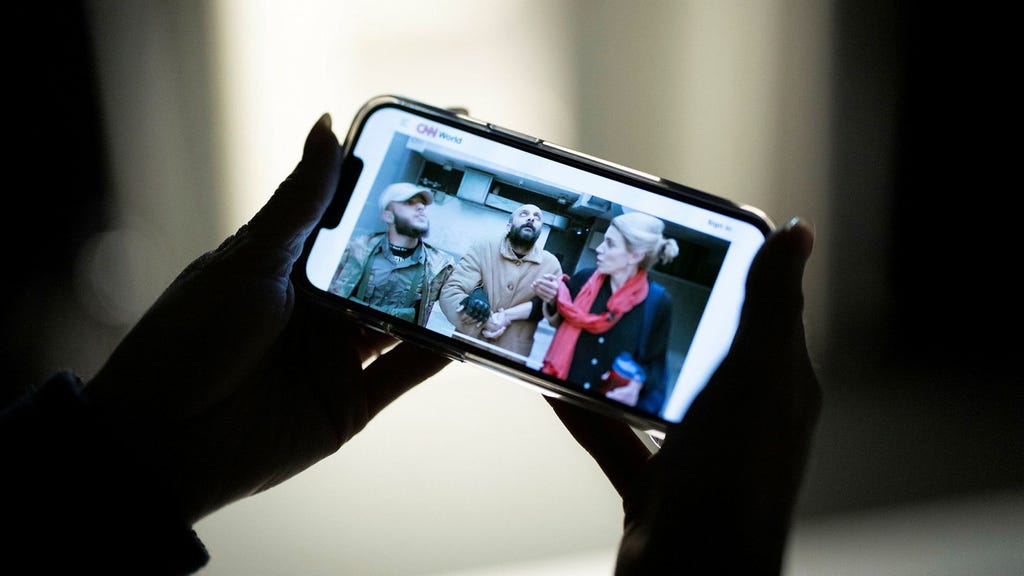The unfolding narrative surrounding the purported ”liberation” of a political prisoner by CNN raises serious questions about journalistic due diligence and the potential for misinformation in conflict zones. Initial footage broadcast by the network depicted a seemingly triumphant moment: a man, presented as a political prisoner unjustly held by Syrian authorities, emerging from a darkened cell into the sunlight, greeted by jubilant crowds. This narrative quickly gained traction, feeding into pre-existing perceptions of the Syrian regime’s oppressive tactics. However, a subsequent investigation by the Syrian fact-checking website, Verify-Sy, cast a starkly different light on the event, alleging that the ”freed prisoner” was, in fact, an officer in the Syrian Air Force Intelligence. This revelation prompted CNN to conduct their own internal review, the results of which corroborated Verify-Sy’s findings, confirming that the man was indeed a member of the Syrian military intelligence apparatus.
The incident highlights the inherent challenges of reporting accurately from complex and volatile environments like Syria. Journalists often face significant obstacles in accessing information and verifying its authenticity, particularly when operating in areas controlled by authoritarian regimes or amidst active conflict. Reliance on local sources, while essential, carries inherent risks, as these individuals may have their own agendas or be subject to coercion. In this particular case, the initial narrative presented by CNN seemingly relied on information provided by individuals involved in the staged liberation, who presented the man as a political prisoner. The lack of independent verification prior to broadcasting the footage underscores the imperative for rigorous fact-checking, especially in situations where information is difficult to obtain and the stakes are high.
The ramifications of this incident extend beyond a single inaccurate report. It underscores the vulnerability of news organizations to manipulation and disinformation campaigns, especially in the digital age where information spreads rapidly and unchecked. The initial narrative of a political prisoner’s liberation undoubtedly resonated with audiences sympathetic to the plight of those oppressed by the Syrian regime, reinforcing pre-existing biases and potentially contributing to a distorted understanding of the conflict. The subsequent revelation that the narrative was fabricated erodes public trust not only in CNN but potentially in journalism as a whole, fueling skepticism and contributing to the already pervasive climate of misinformation.
This incident serves as a crucial lesson for news organizations operating in conflict zones and beyond. It emphasizes the need for robust verification protocols, including independent corroboration of information from multiple sources, rigorous scrutiny of visual evidence, and a healthy skepticism towards narratives that align too neatly with pre-existing assumptions. Furthermore, it highlights the importance of transparency and accountability. CNN’s acknowledgment of the error and subsequent correction, while undoubtedly damaging in the short term, is a crucial step towards regaining public trust. Transparency about the reporting process, including the sources relied upon and the challenges faced in verifying information, can help audiences understand the complexities of reporting from conflict zones and appreciate the efforts made to ensure accuracy.
Beyond the immediate implications for CNN, this incident raises broader questions about the evolving media landscape and the challenges of reporting in the digital age. The proliferation of information online, coupled with the ease with which manipulated content can be disseminated, creates a fertile ground for misinformation and propaganda. News organizations must adapt to this environment by investing in robust fact-checking mechanisms, developing strategies to identify and counter disinformation campaigns, and fostering media literacy among audiences. This includes educating the public about the importance of critical thinking, source verification, and recognizing the hallmarks of manipulated content.
Ultimately, the incident involving the purported liberation of a Syrian political prisoner serves as a stark reminder of the importance of journalistic integrity and the ongoing need for vigilance in the face of misinformation. It underscores the crucial role of independent journalism in holding power to account and informing the public, but also the inherent challenges of fulfilling this role in an increasingly complex and contested information environment. By acknowledging and learning from such incidents, news organizations can strengthen their practices, rebuild trust, and better serve their audiences in the pursuit of truth and accuracy. The responsibility rests not only on journalists but also on media consumers to be critical and discerning in their consumption of information, contributing to a more informed and resilient public discourse.














